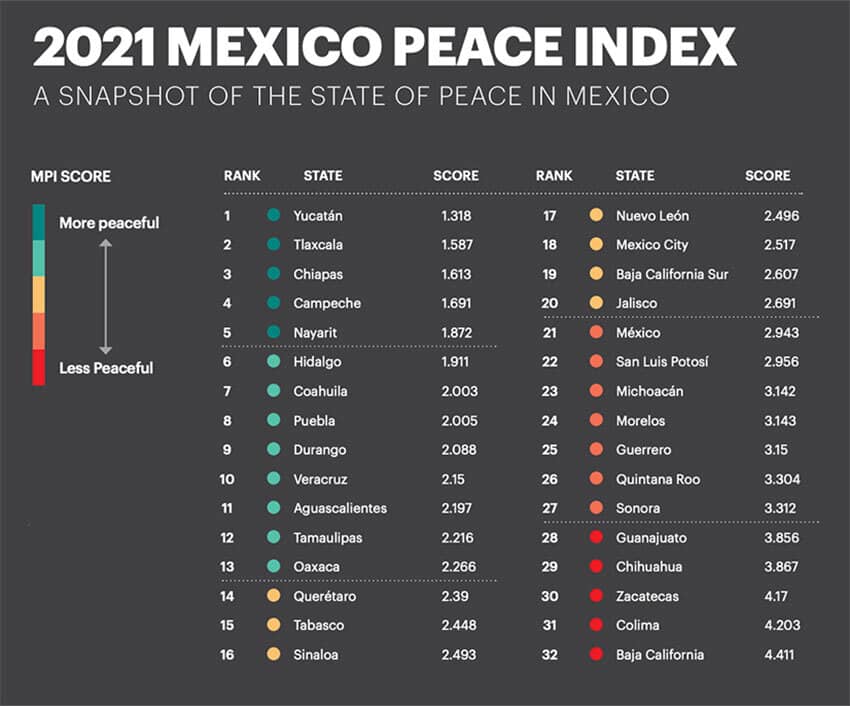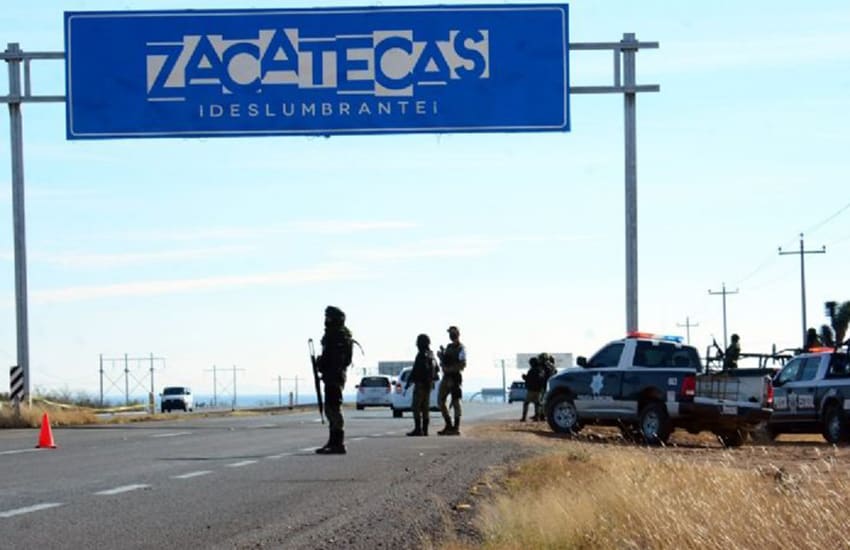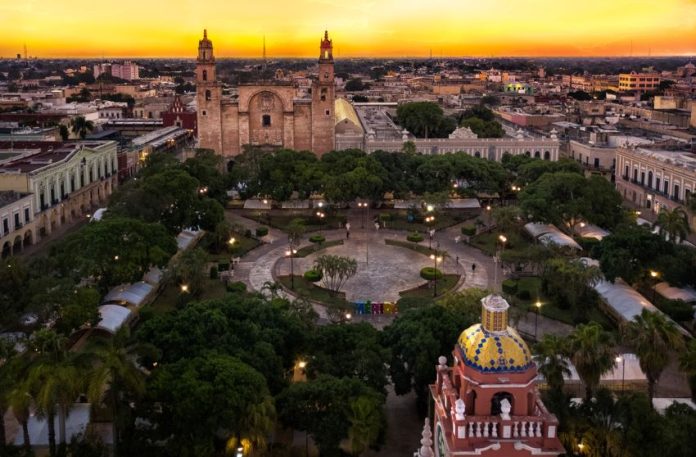Peacefulness in Mexico improved in 2020 after four consecutive years of deterioration, according to a global think tank.
The Institute for Economics and Peace (IEP) said in its report, Mexico Peace Index 2021, that peacefulness improved by 3.5% last year.
“After four years of successive deteriorations, this marks a change in trend following the sharp increases in violence recorded between 2015 and 2018,” the report said. “This change can be traced to well before the onset of the Covid-19 pandemic.”
The IEP said that the violent crime rate fell 13.3% last year, mainly due to a decline in “opportunistic crimes.”
It said that there were reductions in certain types of violence in 2020 following the implementation of public health measures and stay-at-home orders due to the coronavirus pandemic.

“Crimes typically associated with people’s everyday movements — such as robberies, assaults, kidnappings and extortion — all recorded notable improvements in 2020,” the think tank said.
However, homicides only declined 0.4% last year compared to 2019, which was the most violent year on record.
Still, the IEP determined that peacefulness improved in 22 of Mexico’s states last year and only deteriorated in 10.
“Violence in Mexico has become increasingly concentrated, particularly along key drug trafficking routes,” the report said.
“In these areas, rival groups are engaged in violent contests over territory that continue to drive the high homicide rates. In 2020, just six states accounted for more than half of all homicides: Guanajuato, the state of México, Baja California, Chihuahua, Jalisco, and Michoacán.”
The IEP’s Mexico Peace Index (MPI) showed that Yucatán was the most peaceful state in 2020, followed by Tlaxcala, Chiapas, Campeche and Nayarit.
For a third consecutive year, Baja California was the county’s least peaceful state, followed by Colima, Zacatecas, Chihuahua and Guanajuato. All of the five least peaceful states had homicide rates above 64 per 100,000 people, the IEP said.
The think tank said Quintana Roo, Mexico City, Guerrero, Tabasco and Campeche made the biggest improvements on the MPI.
“Quintana Roo recorded the largest improvement in overall score, driven by a 35% decline in its firearms crime rate,” it said.
Zacatecas — where the IEP said homicides surged 65.5% — San Luis Potosí, Sonora, Guanajuato and Michoacán recorded the largest deteriorations.
“Three of these states — Zacatecas, San Luis Potosí and Guanajuato — are located in the greater Bajío region of northern central Mexico and share borders with one another. In recent years, this region has become the location of a violent struggle between several national drug cartels for dominance in the surging fentanyl market,” the IEP said.
Despite the overall improvement, Mexico remains the country with the ninth highest homicide rate in the world, the think tank said. Over the past six years, Mexico’s peacefulness has declined by 18.8%, the IEP said, adding that the deterioration is mainly attributable to an 84% increase in the national homicide rate, “rising from 15.1 deaths per 100,000 people in 2015 to 27.8 in 2020.”
It noted that “Mexico’s homicide rate remains near historically high levels, with over 35,000 homicides recorded in 2020.”
The Australia-headquartered organization also said that 524 police officers were killed last year, a 17.5% increase compared to 2019.
“Political assassinations are also on the rise, with at least 139 politicians, government officials and candidates killed between September 2020 and March 2021,” it said.
The IEP said the economic impact of violence was estimated at 4.7 trillion pesos in 2020, or US $236 billion at today’s exchange rate.
“At this level, it is more than seven times higher than government expenditure on the public health system and more than six times higher than government expenditure on the education system in 2020,” the think tank said.
“On a per capita basis, the economic impact of violence was 36,893 pesos [US $1,854], approximately three times the average monthly salary in Mexico. If the level of violence in all states were reduced to the level in the five most peaceful states, this would result in a peace dividend of 3.3 trillion pesos [US $165.8 billion] per year — equivalent to 16% of Mexico’s GDP.”

Although violence cost Mexico trillions of pesos, the economic impact of violence improved for a second consecutive year in 2020, declining by 1.8%, or 88 billion pesos (US $4.4 billion), compared to 2019, the think tank said.
“The improvement in 2020 was led by decreases in opportunistic crimes such as kidnapping, robbery, extortion and violent assaults,” the IEP said.
The think tank argued that to effectively address violence, Mexico needs to increase its spending on the criminal justice system.
“In 2020, Mexico reported the lowest domestic security and justice spending as a percentage of GDP of all of the 37 countries in the Organization for Economic Cooperation and Development (OECD), at 0.73% of GDP,” it said. “This is less than half the OECD average of 1.68%. It is also the lowest percentage of all Latin America and the Caribbean countries, with the average rate in the region being similar to the OECD average,” the report said.
It also said that “tackling corruption is key to addressing violence in Mexico,” noting that — despite President López Obrador’s pledge to eliminate it — “Mexico ranks 117th out of 163 countries in terms of control of corruption, as assessed by the World Economic Forum.”
“… In order to address elevated levels of violence, a holistic, integrated public security and peace-building framework is needed,” the IEP said.
Mexico News Daily
